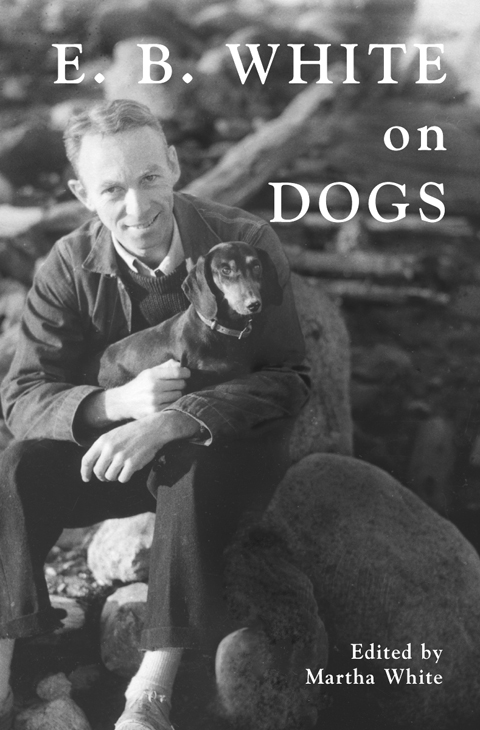
I have no beef against dogs, but I’m not a fan of dog books: too smarmy (especially when the damn dogs talk) and way too heartbreaking when the damn dogs die. That all changes, however, when it’s E. B. White writing about dogs. Or anything else, for that matter. I love his children’s books, of course, but most of all I admire his essays, especially the longer ones he wrote for Harper’s in a column called “One Man’s Meat” and the shorter “Talk of the Town” and “Comment” pieces he did for the New Yorker over many decades. Trying to analyze White’s prose style is a sucker’s game. I’ll say only that his sentences are things of quiet, unassuming beauty, pristine in their simplicity, a parade of subjects, verbs, and objects swaying in perfect rhythm.
Dogs were one of White’s favorite subjects. He shared his life with multiple breeds over the years (but always with a special fondness for dachshunds), and he wrote about dogs with great respect (and a firm conviction that they look upon their human companions with a mixture of tolerance and weary disdain). So when a book called E. B. White on Dogs landed on my desk the other day, I naturally grabbed it immediately. Edited by White’s granddaughter, Martha, the collection brings together essays, short comments, and letters in which dogs play a role.
Perhaps White’s two most “famous” dogs were Daisy, a Scottie who spent her life in Manhattan, and the inimitable Fred, a dachshund who went from city dog to country dog when the Whites moved to Maine. Both Daisy and Fred make multiple appearances here, Daisy most memorably in her obituary, which appeared in the New Yorker, March 12, 1932: “Her life was full of incident but not accomplishment. Persons who knew her only slightly regarded her as an opinionated little bitch, and said so; but she had a small circle of friends who saw through her, cost what it did.” Fred, “the Cecil B. DeMille of dogs,” was another matter entirely: “His activities and his character constitute an almost uninterrupted annoyance to me, yet he is such an engaging old fool that I am quite attached to him, in a half-regretful way.”
Fred plays a supporting role in what is perhaps White’s best essay, “Death of a Pig,” which describes the author’s unsuccessful attempt to save a sick pig on his farm. Fred is White’s assistant: “He never missed a chance to visit the pig with me, and he made many professional calls on his own . . . a happy quack, writing his villainous prescriptions and grinning his corrosive grin.” When the poor pig dies, White’s grief, understated yet palpable, pours from the page like sweat.
There is plenty of grief in his writing about dogs, too, but there is also an abundance of joy. The two, we learn, are sometimes inseparable. Take Daisy, who “never took pains to discover, conclusively, the things that might have diminished her curiosity and spoiled her taste. She died sniffing life, and enjoying it.”
BILL OTT is the editor and publisher of ALA’s Booklist.


